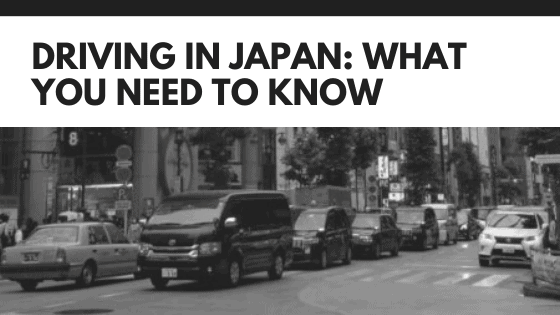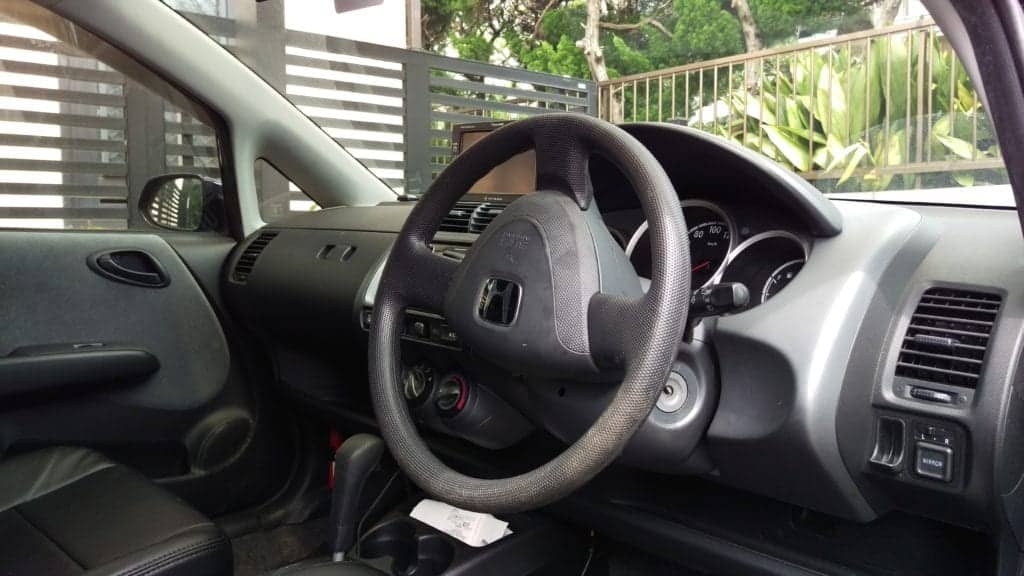Even though DiC tried to trick all of America’s youth by flipping the screenshots on Sailor Moon (anyone else remember that?!), Japan drives on the left-hand side. For us right-siders, this poses some challenges, even with merely crossing the road but you adapt. With arguably the best public transportation in the world, driving in Japan isn’t necessary but it is sometimes helpful. Whether you are just visiting Japan or looking to move, here’s an insider view of what it’s like.
1. Getting your license
If you are here for a visit, make sure to bring your international driver’s license. The process for residents to get their license can be long and expensive if you don’t come from one of the places Japan has an agreement with on driving. If you are an employee of the US Government, the process is completely different and more of an add on to your state license. Fall in that bucket? Be happy with the fact that it is not long and arduous. If you come from certain locations though (mainly those that already drive on the left), the process can be simpler.
2. Driving in Japan on the open (?) road
The speed limits are slower driving in Japan. Much noticeably on the surface roads but the highways are generally slower than other countries as well. The typical speed limits are 80 to 100 km/h on expressways down to 30 km/h on side streets.
They need to be though. The roads (non-high way) tend to be narrower, especially in some cities (I’m looking at you, Zushi). There are plenty of “two-lane roads” that can hardly fit American sized cars. Then there’s this:
That’s a roadway. With no shoulder. Or parking. And yes, those are parked cars. This is a common occurrence EVERYWHERE.
Speaking of musical lanes, on the way to ascend to the 5th station of Mount Fuji there are grooves cut in the road that play music! But I digress…More! It’s everywhere! Sometimes we half lane it.
3. Helpful road tools while driving in Japan
The narrow roads make it very hard to see around corners while driving in Japan. Luckily, we have handy mirrors all over. In America, these are used in convenience stores to keep tabs on would be “thrifty” shoppers (shoplifters if you didn’t get my drift).
Here in Japan? A very courteous driving tool!
4. A note on parking
Parking is of the utmost premium in Japan. The pictures above are the norm. It’s near impossible to find parking sometimes. You have to do substantial research before you drive. As a note, unless there is a sign stating you can park on the street, you can’t. Don’t take the omission as acceptance.
So where do you go? Most larger shopping areas will have garages, sometimes free but if you are in a more urban area, expect you may have to pay. If you are visiting, double
If you are out and about you can find, コインパーキング or “coin parking”. The name stems from originally using coins to pay. However, remember Japan has 500 yen coins (about 5 USD). Prices can get steep fast, even if you are just there for a short while. Usually they cap out at a maximum.
5. Ready to buy? Registering your car
To be able to register a car in Japan, you have to prove your parking spot will fit the vehicle you choose. What’s this take? A trip to the police station! And not just any koban you see on the street. Once there, give them your parking spot information (i.e. your home address, or a spot in a lot you’ve rented which is also common) and the car you want to buy. They go measure to make sure it’ll fit, yup, to your house. After which time, they will issue you a 駐車場証明書 (Chūshajō shōmei-sho) or Parking Spot Certificate. The cost is about 25 USD.
At that point, you may purchase and register your vehicle. No street parking!! If you live in Kanagawa Prefecture, they have the information in English for how to accomplish this. Most likely because with America’s largest Naval base outside the continental United States, they have a lot of foreigners!
6. Other car expenses
While you can find fairly inexpensive cars in Japan, especially if you go with a 軽自動車 (Keijidōsha) or literally a “light car” which has lower taxes, the costs can add up. There are mandatory 車検 (shaken, car inspection) every two years which will include the Japanese Compulsory Insurance and the combination of these two is very often referred to as simply “JCI”. This can cost anywhere from $300 to $800, especially if your vehicle needs something fixed.
If you need new tires (like I did), Autobacs is a great car superstore with everything you could possibly need for your vehicle.
The annual car tax can run you another $100+ and is based on your engine size, which is why “Kei cars” (the aforementioned, “light car”) are popular.
7. Don’t drink and drive
While this should go without saying, it deserves touching on because Japan’s ruling is the most strict. There’s absolutely no tolerance for drinking and driving. In the states, it’s common to have a beer with dinner and think nothing of driving home.
In Japan, the BAC limit is 0.03% and comes with very harsh consequences. Don’t even take a sip if you are driving. It’s not worth it. To the extent that if you went out hard the night before, it’s best to take public transportation the next morning even! Sadly not an uncommon occurrence of people getting popped on their way to work the next day. 飲み会 (nomikai, drinking party) are popular.
8. Highway driving in Japan is very expensive
If all those other fees weren’t enough for you, every highway is tolled. It is not cheap to drive in Japan. For me to get to Narita, one way is $50 in tolls. That’s not including the gas you spent (which is also quite expensive). You can make it on the train for as little as $20 (there are more expensive options as well).
When going through the tollbooths, make sure you get in the correct lane. The automated gates are marked with a blue “ETC専用” and if you don’t have a reader, you’ll be ticketed.
One plus though to driving on the highways? The highway “service centers”. Well equipped with usually many options for food, whether fast or sit down restaurants, clean restrooms, and even shops selling local products!
As driving on the highway is based on per kilometer fees with the addition of tax on top of that, if you are driving long distance, it’s best to carpool so that you can split the expense.





I never thought about this topic!! OMG so interesting. Especially that you can’t park on streets unless it’s specified. Yikes!! Your experiences there are so cool!!
I never thought about this topic!! OMG so interesting. Especially that you can’t park on streets unless it’s specified. Yikes!! Your experiences there are so cool!!